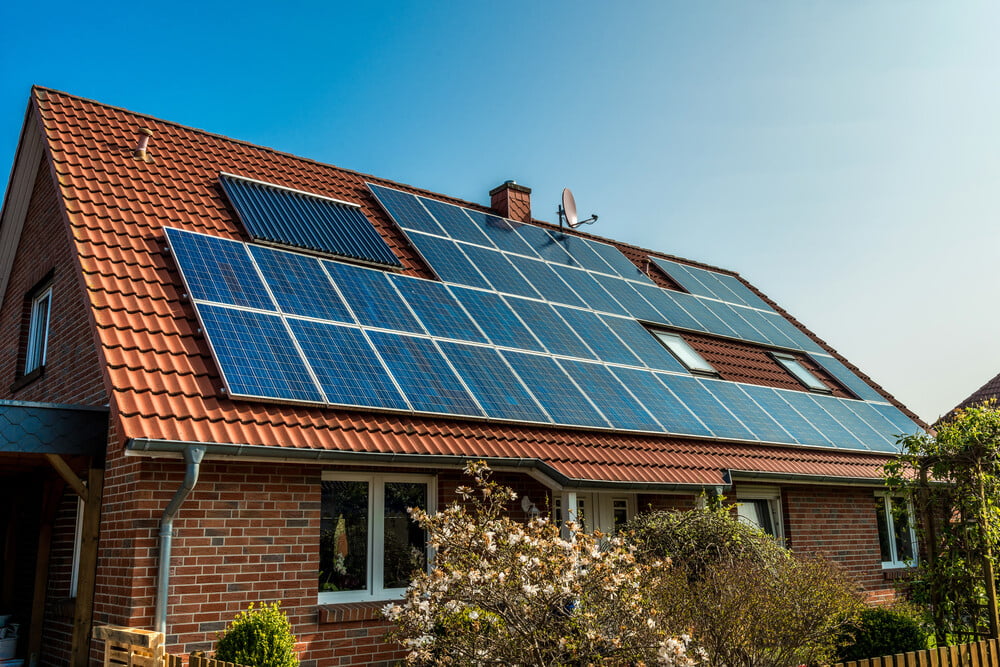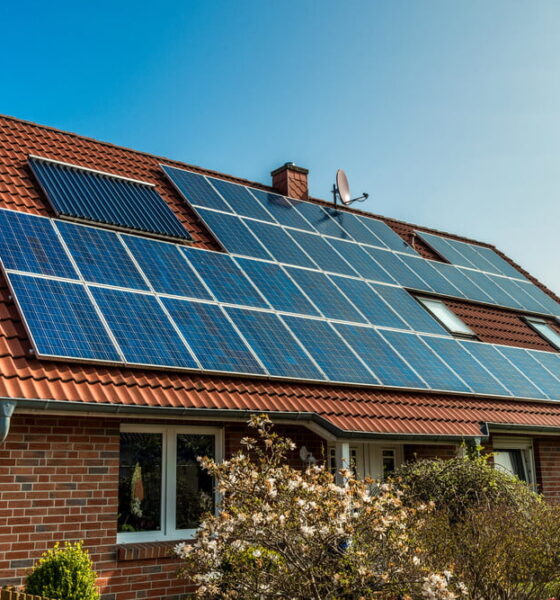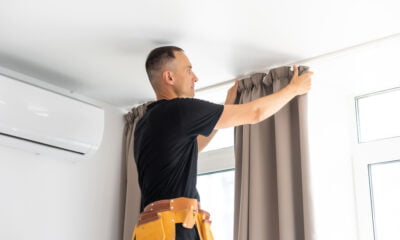

Energy
9 Simple Changes for Creating an Energy-Efficient Home
Green buildings are more popular than ever. Despite the pandemic, the market for eco-friendly buildings is worth $79 billion in 2020.
There are numerous metrics that determine how eco-friendly a home is, but energy efficiency is one of the most important. Energy efficiency refers to using less energy to perform the same task to eliminate energy waste, save money, and improve the environment. Begin your journey towards an energy-efficient lifestyle by discovering methods for changing your home for the better.
Here are 9 simple changes for creating an energy-efficient home:
1. Understand Your Home’s Energy Usage
Understand your home’s energy usage to successfully apply small changes capable of creating a major difference. Generally, a home’s energy consumption consists of heating and air conditioning at 46%, water heating at 14%, appliances at 13%, lighting at 9%, and electronics at 4%. Identify your home’s specific energy usage by performing an energy audit.
2. Develop Mindful Habits
Develop mindful habits to begin transforming your home’s energy consumption. Creating energy-efficient habits involves answering relevant questions to discover your daily habits. Do you turn the lights off when you leave a room? Do you constantly keep fans on? Do you leave doors open? Do you open curtains during the day? Become aware of your regular habits to effectively conserve energy and save money.
3. Change Lights
Change your lights to promote energy efficiency every time you turn on a light. Traditional incandescent light bulbs use unnecessary amounts of energy. Energy-efficient light bulbs, specifically LEDs, use 75% less energy and last 25 times longer. LEDs feature higher price tags; however, the energy conservation and long-lasting results save you more money over time. Other energy-efficient light bulbs include halogen incandescents and CFLs.
4. Unplug Electronics
Unplug electronics to avoid wasting valuable energy. Almost 75% of the energy used for electronics and appliances occurs while they’re turned off, costing approximately $200 every year. Stop spending money on unused chargers and coffee pots by unplugging unnecessary electronics and appliances.
Additionally, consider purchasing power strips or smart power strips to simplify and streamline the process.
5. Cook Smarter
We have talked a lot about the importance of growing your own food and having a greenhouse to lower your carbon footprint. However, it is also important to cook more sustainably.
Cook smarter to enhance your kitchen’s energy efficiency. Numerous methods are available to reduce your kitchen’s energy expenses, including:
- Using lids on pots and pans to preserve as much heat as possible
- Choosing burners matching your pot’s size to conserve energy
- Cleaning your stove regularly to ensure it properly conducts and reflects heat
- Defrosting food ahead of time to limit cooking time
- Purchasing ceramic or glass dishes for the oven to reduce cooking times and temperatures
- Dispose of oil and grease properly
Kitchens are excellent spaces for family and friends to gather together, so discover small changes for cooking smarter to eliminate wasted energy.
6. Buy a Programmable Thermostat
Buy a programmable thermostat to control your home’s energy usage. As previously mentioned, heating and air conditioning account for the majority of your electricity expenses. Programmable thermostats allow you to easily create settings for saving energy while you’re at work, asleep, or on vacation, saving you about $180 every year.
Smart thermostats are also available offering similar features but allowing you to control your thermostat using your smartphone.
7. Use Appliances Less
Use appliances less, primarily major appliances, to create an energy-efficient home. Tips for using your appliances less include:
- Keeping your refrigerator and oven doors closed
- Running only full loads through your washer and dishwasher
- Choosing smaller appliances, such as microwaves and toaster ovens, instead of your oven when possible
- Adjusting your water heater to a lower temperature
Research a variety of ideas for using your appliances wisely to save a substantial amount of money and energy.
8. Purchase Energy-Efficient Appliances
Purchase energy-efficient appliances to easily conserve energy every time you use an appliance. Energy-efficient appliances usually have higher upfront costs; however, operating costs are about 9% to 25% lower, meaning you’ll save more money over time. Look for appliances featuring an Energy Star label to guarantee your appliances use less energy than traditional models.
9. Research Green Providers
Choose an energy-efficient electric provider by researching green options near you. Comparing electric rates allows you to control how your home’s energy usage impacts the environment while also saving you money. Exercise your power to choose by researching green electric providers near you and making the switch.
Create an energy-efficient home by considering these 9 simple changes for success.






























